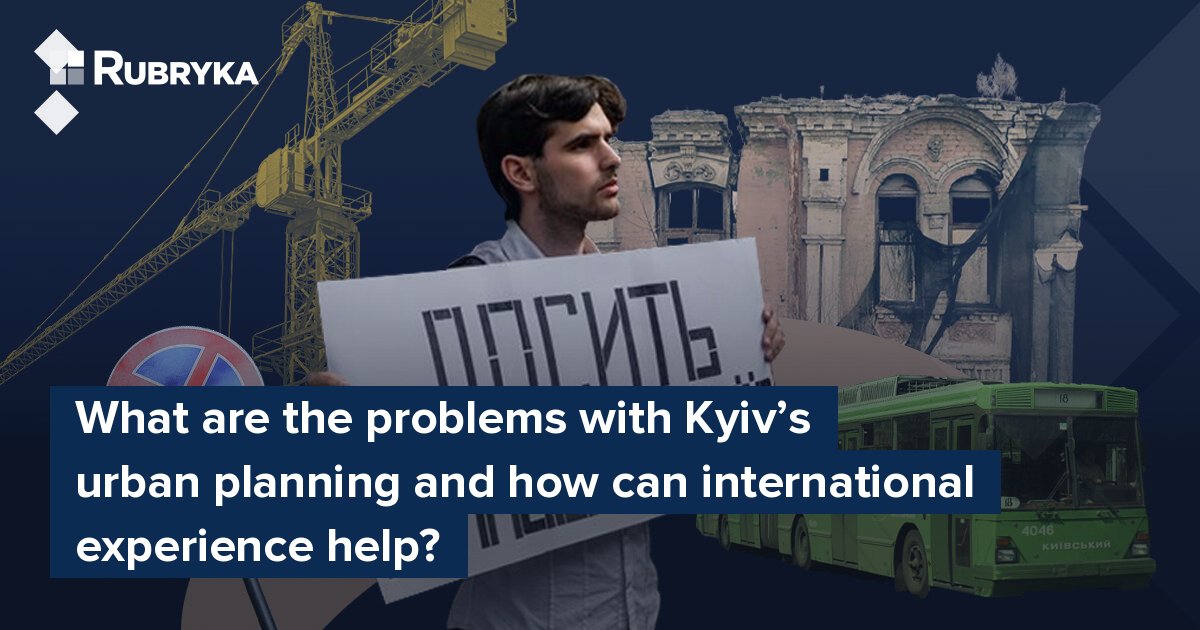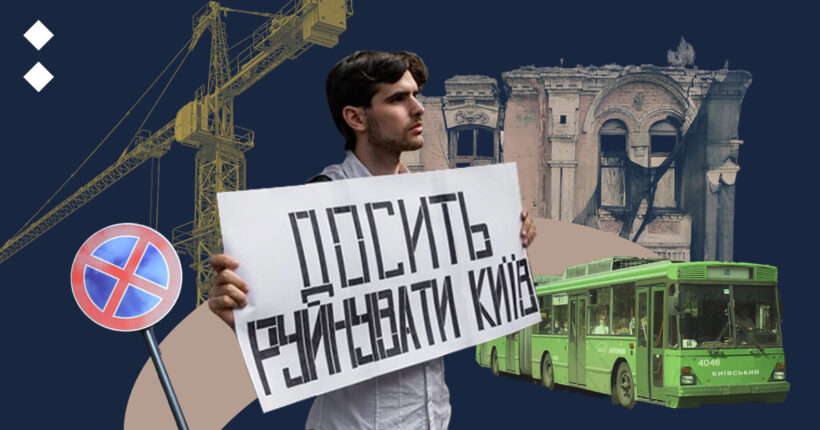
In 2023, Kyiv fell into the ten least comfortable cities to live in, ranking 165th out of 173 in the annual ranking of The Economist's Global Liveability Index. Although Russia's full-scale invasion of Ukraine has damaged the city's infrastructure, and daily air raids have made overall livability more unstable, its metropolitan problems predate the war. Kyiv has struggled with the lack of a development strategy, a general plan built during Soviet times, with a communist mentality, and the indifference from local officials for years since. Rubryka spoke with urban planners Vladyslav Samoilenko and Serhii Ivanov-Kostetskyi and activist Dmytro Perov about Kyiv's most significant challenges, and strategies for solving them.
What is the problem?
Kyiv is slowly degrading as a city — roads are congested with cars, parking spaces are scarce, and the public transport schedule is unstable. Low air quality, high density of buildings, low accessibility, and degradation of cultural monuments are all factors that make the capital far from a comfortable life. Besides, in Kyiv, the city development is heavily dependent on the whims of the local administration, which are not backed by urban specialists expertise.
"Foreigners and Ukrainians who have lived abroad have long been uncomfortable in Ukraine. They are used to feeling safer, not experiencing such noise and light pollution as they do from the capital's aggressive advertising with backlights on billboards," explains Vladyslav Samoilenko, urban planner, founder, and head of the Gurkit charitable foundation.
Samoilenko and Ivanov-Kostetskyi offered potential solutions for the key problems Kyiv faces.
Every problem finds its solution
📌 Traffic jams
Home to over three million people, Ukraine's capital Kyiv is overloaded with cars. Data from the traffic analytics company TomTom ranked pre-war Kyiv among cities with the worst congestion factor globally – finding that drivers' commutes can be 56% longer during peak congestion times. Although statistics are not up to date due to the ongoing war, the problem remains relevant.
"Kyiv does not pay enough attention to the development of public transport, so it is more convenient for citizens to travel by car," Samoilenko explains.
Solution: Improve the public transport system.
Urban planners recommend modifying routes, schedules, and capacities to ensure buses, trolleybuses, and trams operate at shorter intervals, creating a reliable and comfortable transportation system in Kyiv.
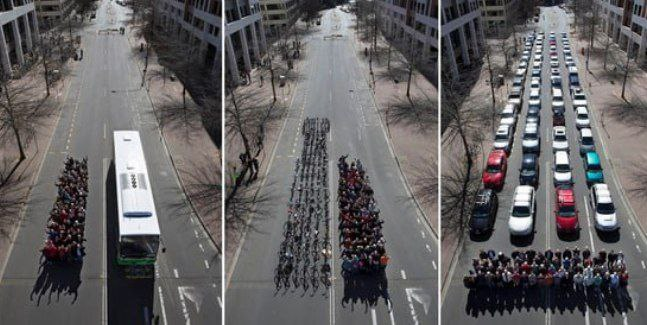
Comparison: how much space on the road is occupied by 70 people using a bus, bicycle, or car. Source: Australian Cycling Promotion Fund
Experience of other cities: alternative routes duplicating each other.
This problem can be partially solved by adopting lessons from Budapest's experience. Densely populated Budapest uses one-way traffic to decongest the roads. A driver can always get to the next street by going around the block. The authorities should analyze which streets in Kyiv can duplicate the city's central streets in this way, Ivanov-Kostetskyi suggests.
📌 Lack of parking spaces
In Kyiv, people mostly use their own cars to get to work. Most workplaces don't provide employees with parking, so people park on the streets. Not only is it inconvenient, but also it congests streets.
Solution: Allocate spaces for cars at the development stage.
Ivanov-Kostetskyi emphasizes that every building in the city needs specially allocated parking spots — either underground, or nearby.
The experience of other cities: Allocate a part of the unused road for parking.
For example, in Budapest, one-way traffic not only decongests the roads — the unused part of the roadway is allocated for parking.
📌 Polluted air due to car emissions
The air quality in Kyiv is poor, mostly due to high traffic. Samoilenko says the situation improved significantly in the beginning of the war in 2022, when thousands of Kyiv residents evacuated the city. The air quality improved immediately, but as increasingly more residents are returning to Kyiv, already by the end of 2022, the air quality has dropped again.
Solution: Develop a safe cycling infrastructure.
Bicycle paths can encourage citizens to opt for this more environmentally friendly transport more often. It may also help decongest Kyiv roads.
The experience of other cities: Dutch public policy.
Urbanist Ivanov-Kostetskyi spoke about the experience of the Netherlands, known for its developed bicycle infrastructure. The state's government creates comfortable conditions for cyclists: tens of thousands of kilometers of bicycle routes have been laid, and laws developed to protect cyclists.
In the 1960s, the Netherlands adopted a program encouraging citizens to switch to bicycle transport. Sixty years have passed, and now many people cycle, even in winter. "Let's adopt such a policy today, and in 60 years, we'll meet and see if we could surpass the Dutch," the expert suggests.
📌 Public transport moves slowly as private vehicles' drivers use its lanes
In Kyiv, it is not rare that drivers break traffic rules and use the public transport lane to bypass traffic, or even park there.
Solution: Install delineators that will prevent drivers from obstructing public transportation.
In 2018, as part of the participatory budget project, Samoilenko's Urban Crew team initiated the separation of the public transport lane from the rest of the flow by installing delineators — "orange columns".
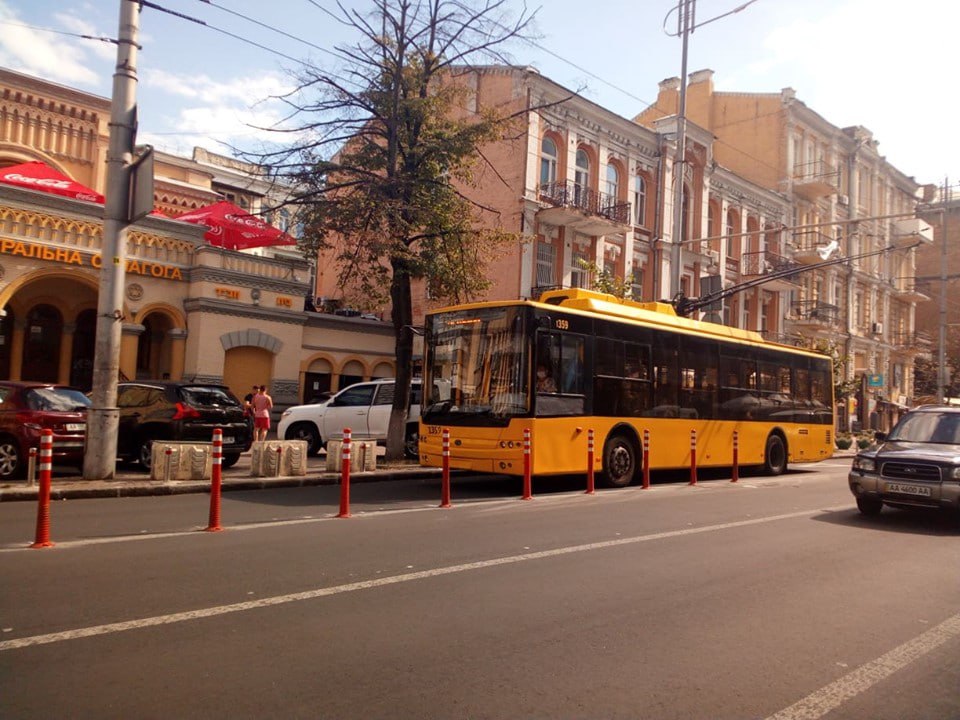
Orange delineators separate the public transport traffic lane on one of the Kyiv streets. Photo from the personal archive of Vladyslav Samoilenko
Experience of other cities: Creative approaches to dealing with the violators.
Ivanov-Kostetskyi mentions an interesting method of shaming for violations he observed in Germany. "Punishments are issued very cunningly there for not paying for a parking space. Instead of a check, the driver is given a piece of paper under the windshield wiper, on which it is noted that they behaved badly, the authorities recorded the license plate number, and the driver will receive a fine within the time limit specified by law," says Ivanov-Kostetskyi.
📌 Transport collapse due to closed metro stations
In late 2023, during the inspection, a section of Kyiv metro was found dangerous due to the depressurization of the tunnel and the appearance of cracks in its walls. On December 8, 2023, Kyiv authorities closed six metro stations on one of the capital's metro lines.
Solution: Launch routes that duplicate metro traffic.
New ground transport routes have been created to replace the metro, duplicating the path between closed underground stations. Subsequently, a shuttle line was launched between the closed stations, and the train began to move in two directions on a safe section.
Since then, residents of the affected districts have begun to get used to the new routes.
📌 Lack of inclusion and accessibility
The city of Kyiv lacks ramps, elevators, and parking spots allocated for people with disabilities. Not only do people with permanent disabilities need these, but also anyone who happens to be carrying a suitcase, a pregnant woman, elderly people, or parents with prams.
"A tourist arriving at the railway station should have no problem walking with a suitcase and getting wherever they need to go. This is the norm in other cities with developed barrier-free spaces," Samoilenko notes. For Kyiv though, this is not the case. One of the obstacles to the barrier-free space of Kyiv is a large number of underground passages with insufficient accessibility, and a lack of marked crosswalks.
Solution: Develop more crosswalks.
In 2021, the Urban Crew team and state representatives singled out about a hundred sites where it was possible to build a pedestrian crossing. Activists transferred the data to the Department of Transport Infrastructure, which issued an order to build half of the proposed transitions.
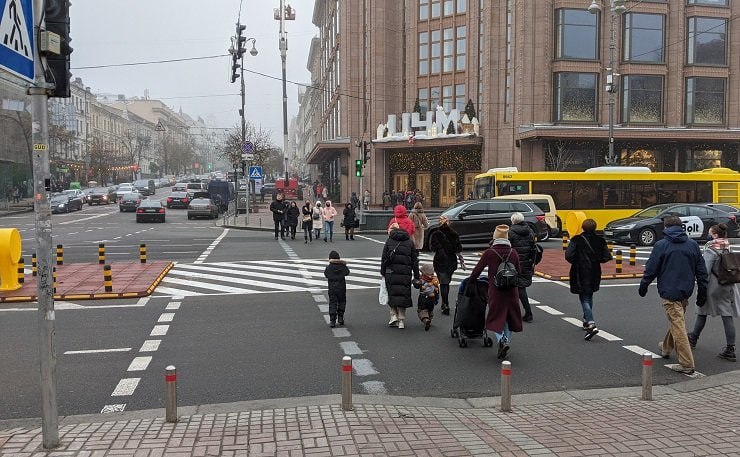
A pedestrian crossing in Kyiv's central street. Photo from the personal archive of Vladyslav Samoilenko
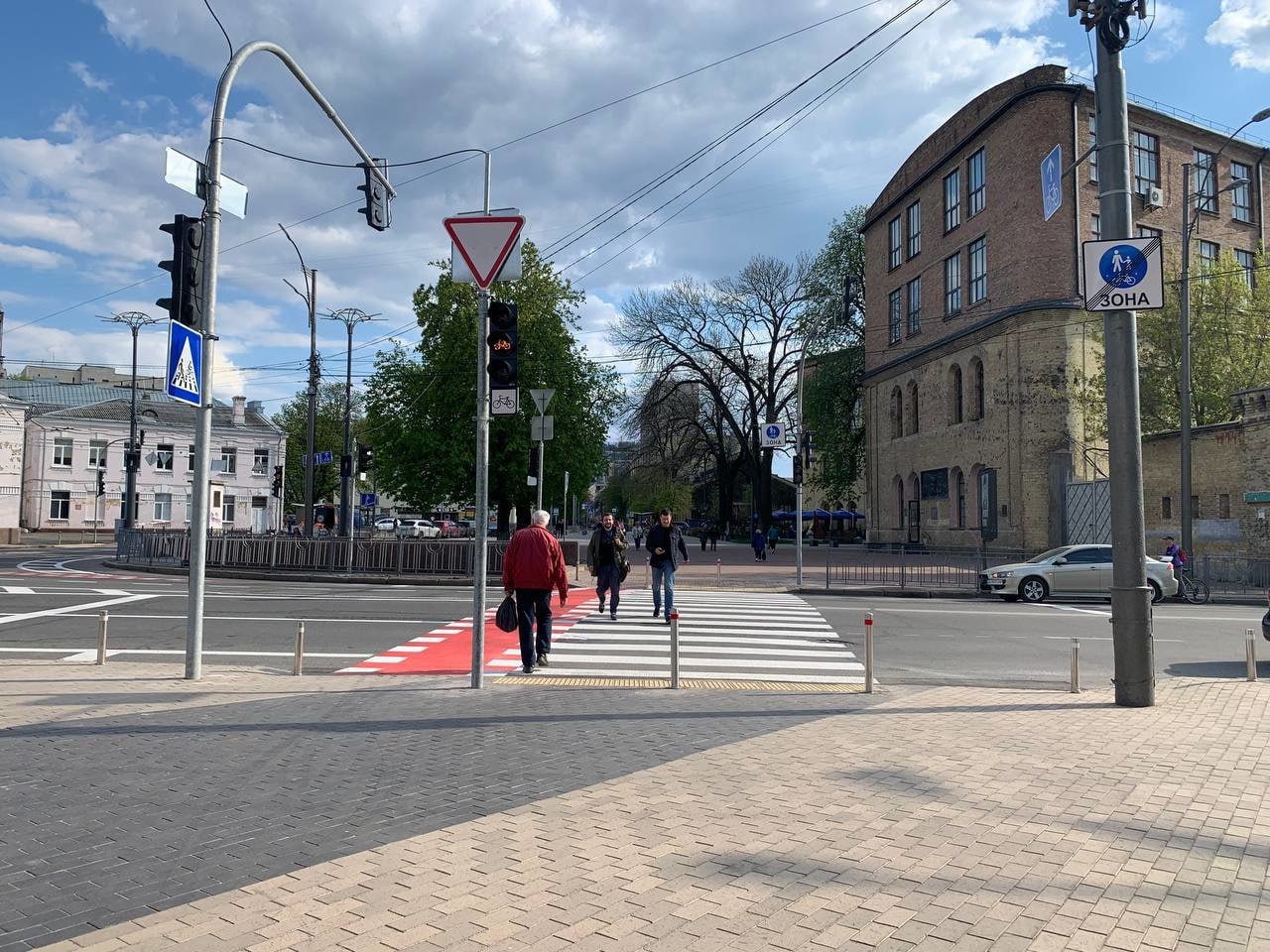
Pedestrian crossing in Kyiv downtown. Photo from the personal archive of Vladyslav Samoilenko
Samoilenko is convinced that Kyiv needs long-term systemic solutions. Ukraine can rely on its neighbors' experience in this. In other European cities, officials routinely analyze how their decisions affect human health and safety, the environment, and attractiveness for tourists and investors. Kyiv can do the same.
Newsletter
Digest of the most interesting news: just about the main thing



